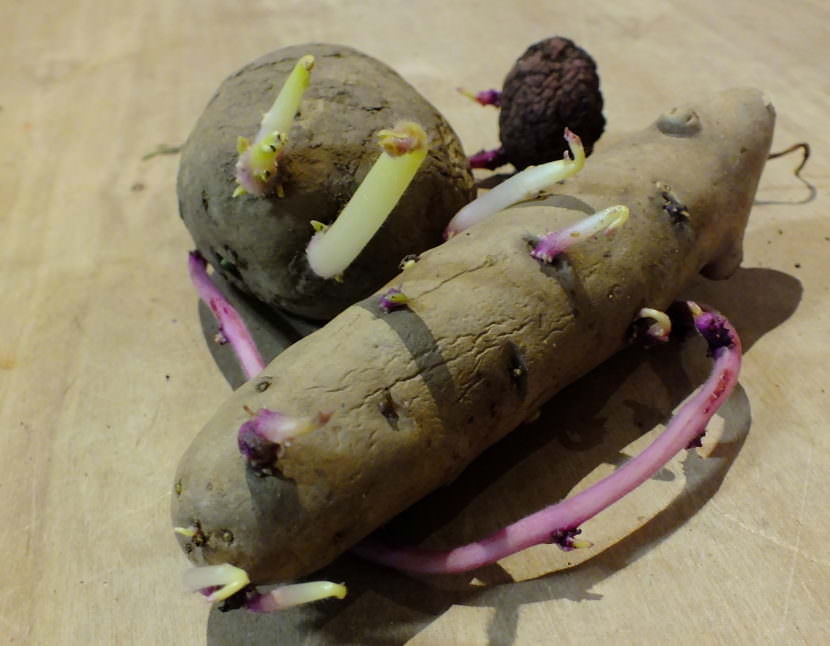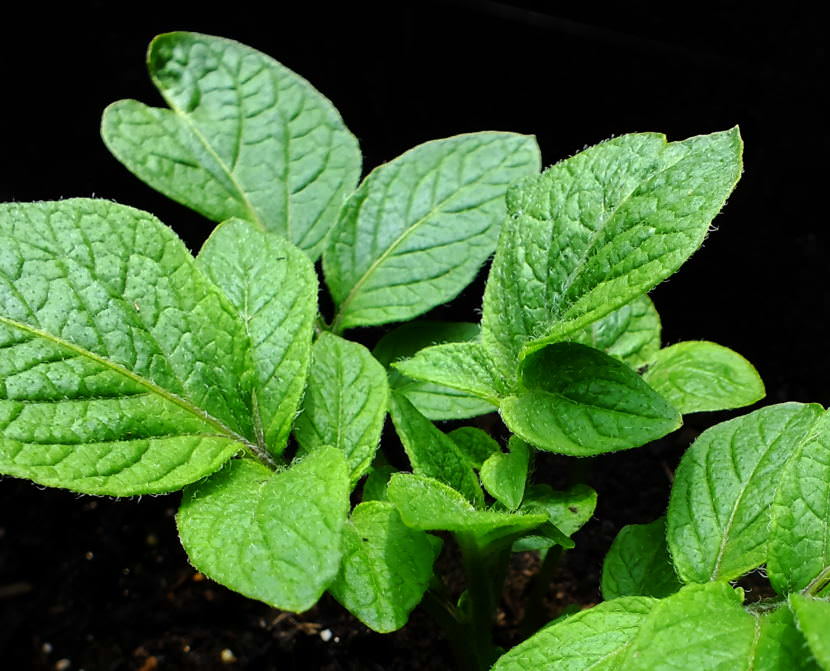
Potatoes are one of the biggest Alaska crops by poundage, and they are a great way to supplement your homegrown food supply during the current pandemic. But seed potatoes are currently in short supply in Juneau.
You may be lucky enough to already have seed potatoes. What next?
Master Gardener Ed Buyarski recommends splitting seed potatoes up into golf ball or ping pong ball sized pieces with at least an eye or two.
After sprinkling about a cup of 8-32-16 or 10-20-10 fertilizer along a 10 foot long trench about about 6 to 8 inches deep, plant the potato seeds with the eyes or sprouts pointing up. Just barely cover the seeds and sprouts with a half-inch of soil. Space the trenches at least 12 inches apart.
Reserve the rest of the soil piled up while making the trench until later when the potato plants grow to about 4 inches tall. Called hilling, the entire plant should be gently covered with that extra soil except for the very top of the plant. Keep repeating whenever the plant grows another 4 inches, as long as you have enough soil.
Buyarski recommends rotating your potato beds or growing in a new plot every year to avoid propagating potato scab, a fungus that can adversely affect your crop. He suggests planting cabbage, lettuce, beets, carrots, and turnips at least every other year in your old potato plot.
“Ideally, a couple years’ rotation is preferable,” Buyarski said.

Buyarski also answered a related listener question:
Dan writes, “Is there anything useful can be done with fresh moss from a recently thatched yard? Mulch for potato beds?”
Buyarski doesn’t recommend using it in your potato bed.
“If you use the moss in the potato garden, then you going to have a new moss garden in your potato patch,” Buyarski said. “Then, you’re going to have to thatch the potato patch.”
Instead, he recommends using hot composting to kill the moss, using the moss as decoration on rocks, or using it to fill a low area in a yard.
